Lauren DiCioccio is a textile artist living in San Francisco. Born and raised in Philadelphia, she received a BA from Colgate University where she studied art and art history.
Lauren has shown her work at venues in San Francisco, including Jack Fischer Gallery, Intersection for the Arts, The Lab and the SFMOMA Artists Gallery.
In this interview, Lauren discusses the materials and techniques she employs to produce her recreations of soon to be forgotten objects and how discovering fabric sculpture has opened the floodgates of her imagination.
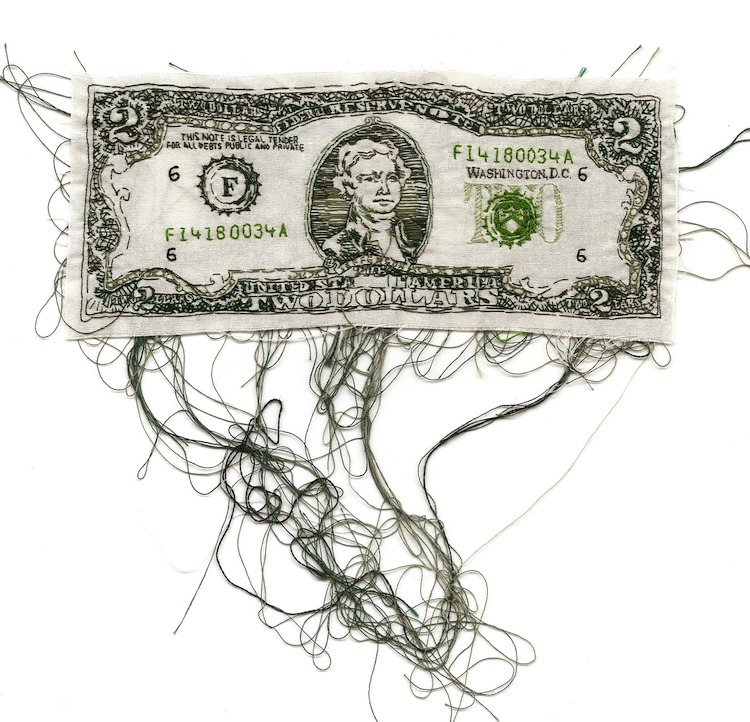
The tactility of the material
TextileArtist.org: What initially attracted you to textiles as a medium?
Lauren DiCioccio: I‘ve always been attracted to the medium of textiles. I think primarily because of the sense of nostalgia they hold for me.
I did a lot of craft projects as a kid and it seems like there was always some kind of textile-based project, from sewing Halloween costumes to doing cross-stitch samplers.
The tactility of the material really makes me feel connected to those memories of my first discoveries of making things and I think this is part of what makes the material so evocative for me.
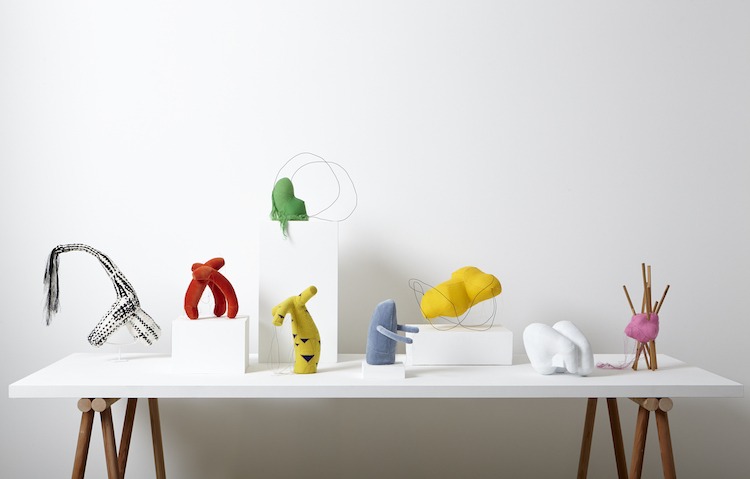
And, more specifically, how was your imagination captured by stitch?
I studied painting when I was in college and after I graduated I was really interested in making colourful abstract paintings. I felt that when I shared them with others, it was a sort of conversation-stopper, maybe they were just bad, but I felt like it was a little unfulfilling to make work that didn’t foster any sort of conversation with an audience.
Around the same time, I was doing some sewing for fun, making clothing. The stitching worked its way into the artwork I was making and led me down the path of working with embroidery.
I immediately noticed a difference in the experience of sharing my work with others, people always felt a relationship to the stitched work, often a story about how they’d done embroidery with their grandmother, or about a time a button fell off their coat and they had to stitch it back on, or some kind of personal antidote that related to the concept or medium of my work.
I loved that the medium provided such candid and open responses and these conversations made me feel really successful in the work I was doing.
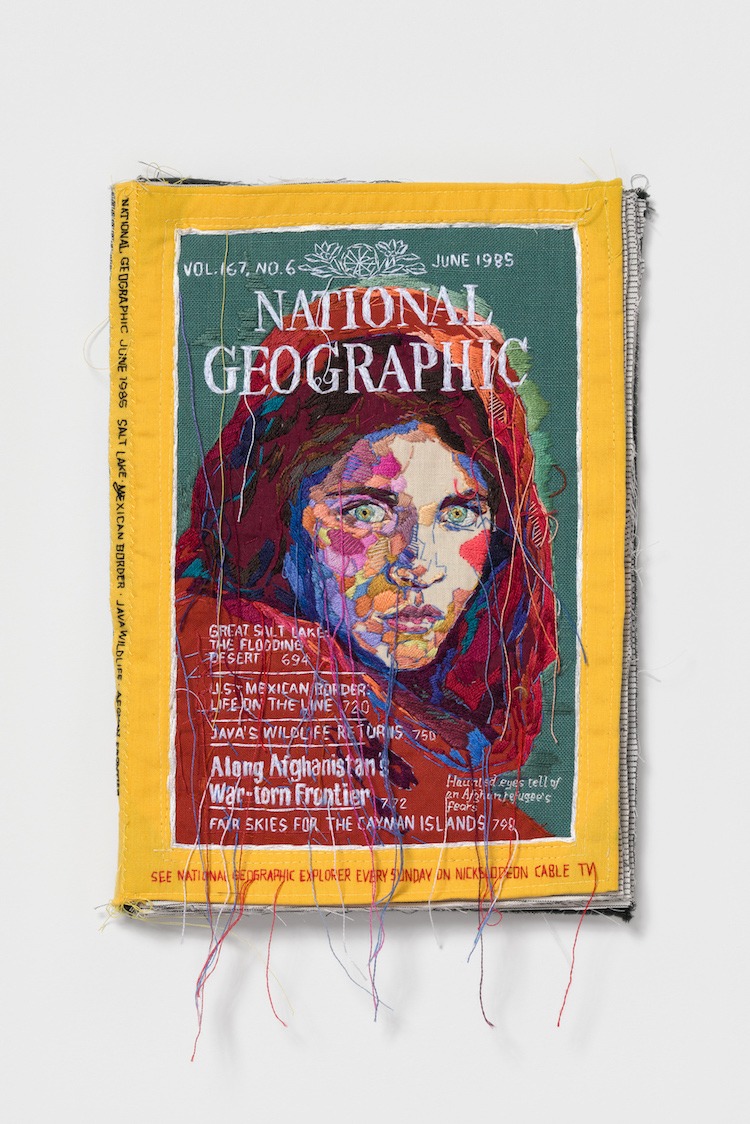
What was your route to becoming an artist?
I studied Art in my undergraduate program at Colgate University but never thought I’d become an artist professionally.
After taking a year off to work and travel abroad after school, I moved to the San Francisco Bay area to accept a job at an artist-in-residence program called the Djerassi Resident Artist Program.
The job I accepted was a 9-month internship and I thought I was embarking on a career in arts administration. I was the on-site staff person at the residency and it was incredibly inspiring to me to meet all of the artists who came through the Program. I’d never really known anyone who had pursued a professional life as an artist and I was so amazed at all the brilliant and talented people who I got to meet in this role.
The Program takes place on a beautiful 580-acre former-cattle ranch in the redwoods and, though it’s very close to the towns along the Peninsula, the property itself is very remote, at the time I moved there we had landlines for the phone and a dial-up modem for the internet!
I had a lot of time to spend in the studio I was given as part of my living accommodations and I inevitably started spending a lot of time making art. I ended up working for the program for almost 7 years and in the time I was there, developed a devoted studio practice and found a lot of mentorship from the artists I met.
It was an amazing experience and when I left the job in 2010, I started making my work full-time and have been lucky enough to be able to make art-making my foremost occupation ever since.
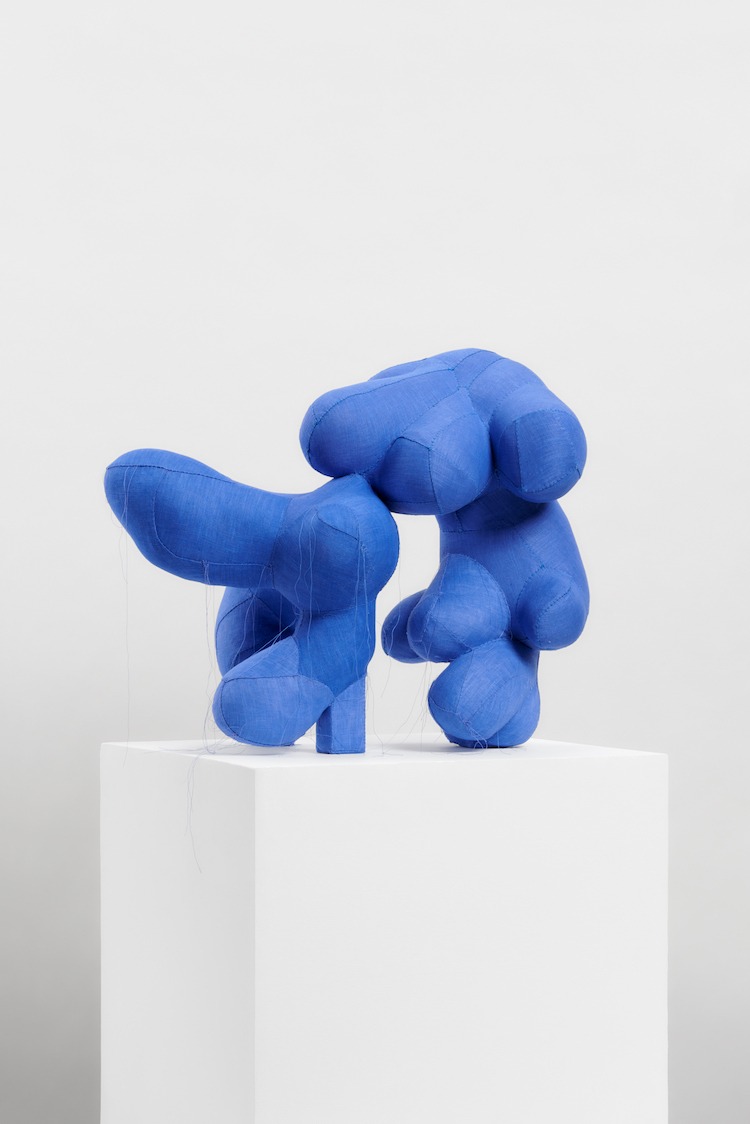
Recreating with embroidery
Tell us a bit about your chosen techniques.
The earliest work I exhibited was a series of wall pieces I called ‘Sewn-News’.
To make these pieces, I transfer an image from The New York Times onto a piece of cotton muslin; I developed a style of embroidery to stitch these images that I consider to be a painterly approach. I invented the colour and line and add texture to each piece, which really brings the image to life.
I left the threads to dangle in these pieces to show process and the passage of time; I really wanted the image to look like it’s pouring off the page and I wanted the viewer to consider the fragility of information and ‘the news’, and to feel like if they just tugged at one thread, the image would unravel. I started this series in 2006, but this concept feels more relevant than ever today.
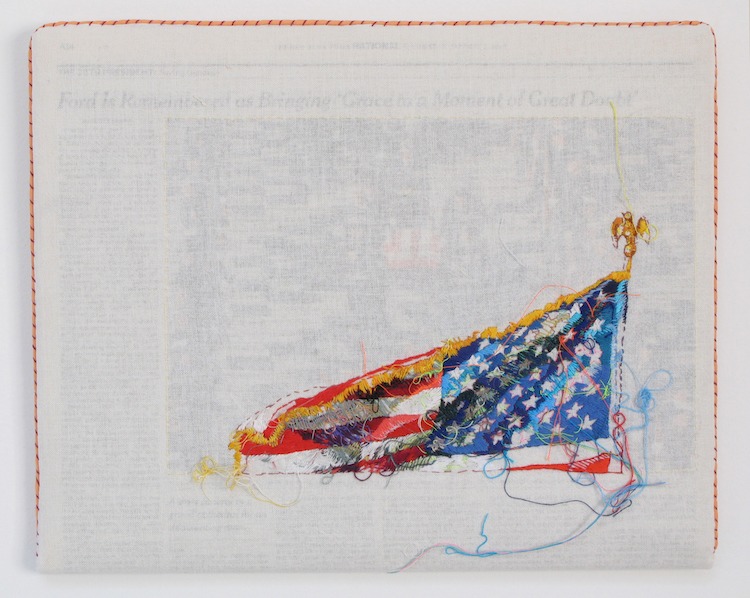
This work evolved into a series of ‘trompe l’eoil’ recreations of other objects which, like the newspaper, seemed to be obsolescing from our tactile experience of day-to-day life.
As more and more apps emerged to consolidate most actions into our iPhones, I was postulating about what would change as these paper media, for example, objects lost their physical identities and got trapped behind our tiny phone screens.
My tedious hand-sewn recreations served as a sort of plea ‘don’t forget about us!!’. I didn’t have any exact science for the techniques of making this work, I’d just pick an object…and then recreate it with embroidery and some basic piecework to make it three-dimensional. I didn’t use stuffing, even when the objects had mass, as I wanted to take advantage of the way the cloth crumpled and sagged to highlight a sense of pathetic-ness about hanging on to these objects, that in our day to day were mostly disposable.
The more I worked at the series, the better I got at embroidery, that’s really how the work got to have a sense of ‘trompe l’eoil’.
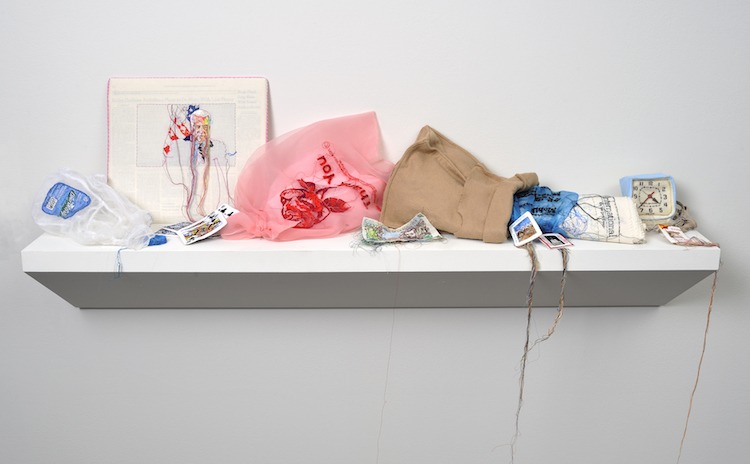
My most recent work departs from any specific source material, but I continue to work in the medium of textiles.
My last two series, titled ‘Familiars’ and ‘Comfort Objects’ but really part of the same body of work, employ soft sculpture in a very intuitive way. I’ve taught my hands to work with these materials so well after years and years of stitching, so now it’s interesting to me to see what the materials themselves want to do.
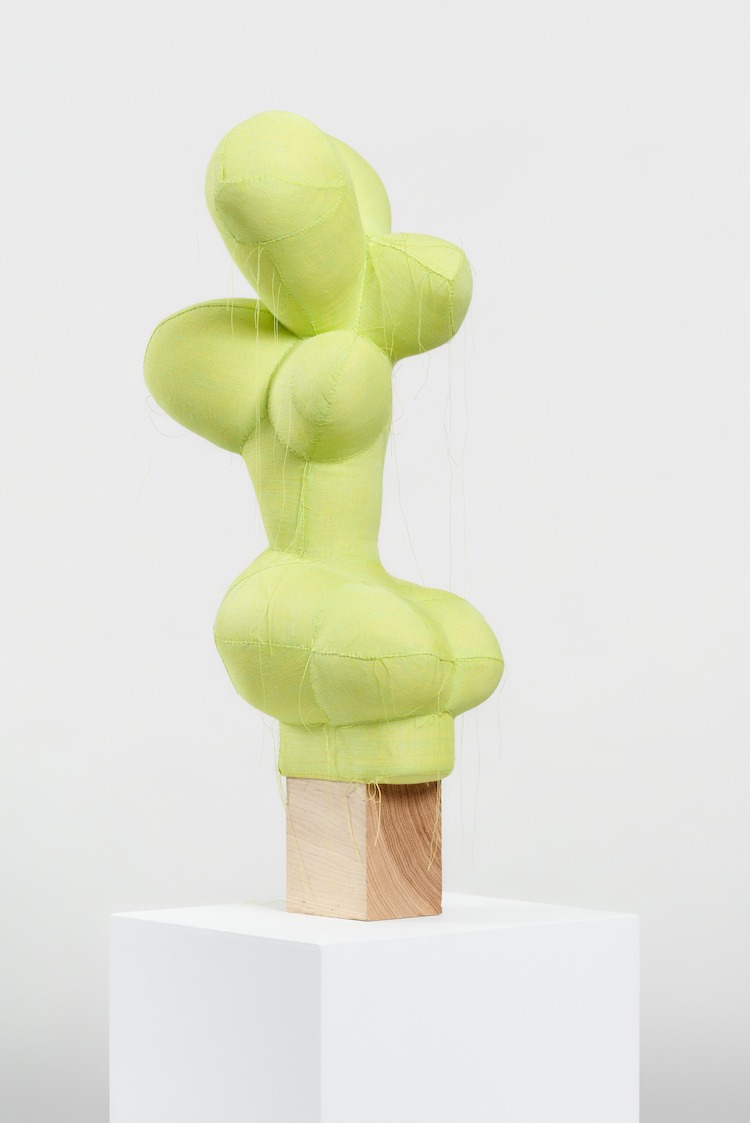
The main goal of the work is to use the alchemy of sculpture to take the inanimate and very simple materials of cloth and stuffing and sometimes wood and turn them into something alive with personality. It’s among the simplest and the most complex ideas an artist works with and I am finding it infinitely interesting.
My process is to start with a simple armature, something I’ve made or a found object, and to start applying felt and stuffing to it with a staple gun. I build the form additively, usually somewhat mindlessly or intuitively, until it starts becoming something recognisable.
I try to treat the materials like clay, kneading and pushing and pulling, using strong upholstery thread to compress the stuffing as much as possible. When I’ve finished the form, I very carefully upholster the piece with hand-dyed linen. I’m very tedious and specific about it as I want it to be perfectly taut, like skin.
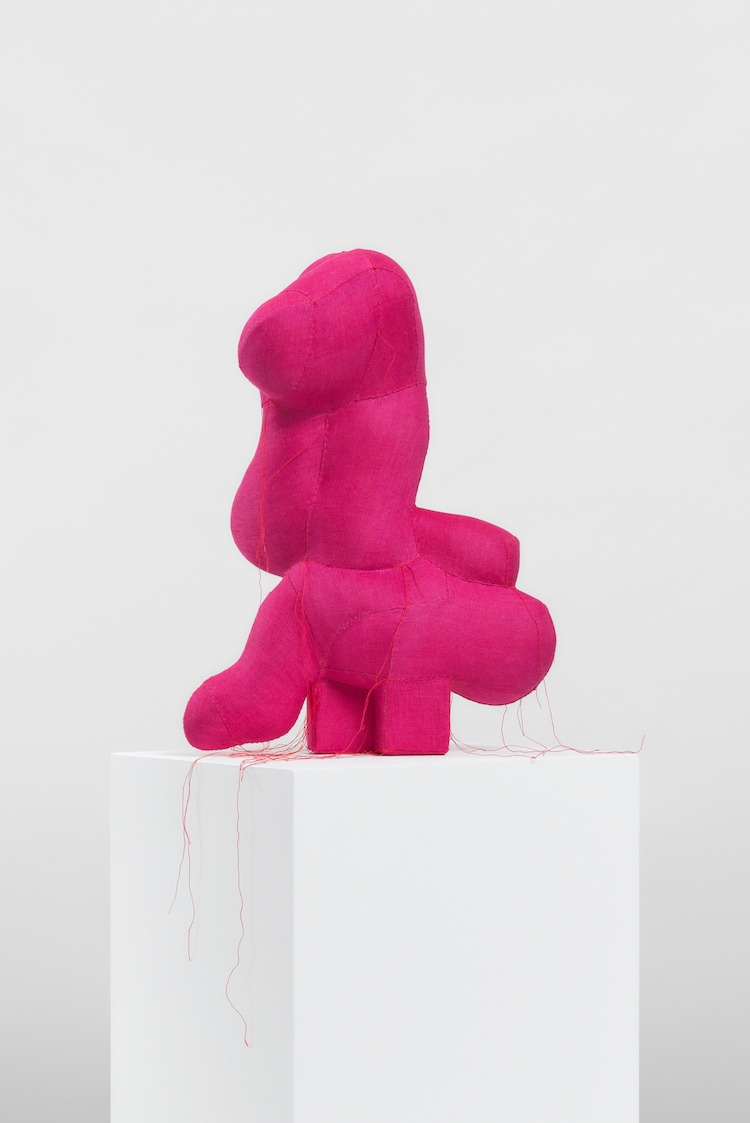
Do you use a sketchbook? If not, what preparatory work do you do?
Nope, I don’t use a sketchbook. I usually just go to my studio and start making stuff.
What environment do you like to work in?
When I was doing more embroidery-based works, I could take my work anywhere. I really loved that it was so portable and easy, although my box of thread, which I keep in a big growing clump all mixed together, in recent times has gotten quite large and unruly which makes it hard to travel.
These days I love to work in my studio, surrounded by work in process. I like to work on a lot of pieces at one time, so it’s very important to be in the room with everything.
Often a piece gets cut in half and becomes two. Or two pieces get sewn together and become one. When I’m choosing the colours to dye the linen, I like to see all the colours together. It’s hard to make any decisions about my recent work when I’m looking at just one piece, it all seems to have to happen in the same room.
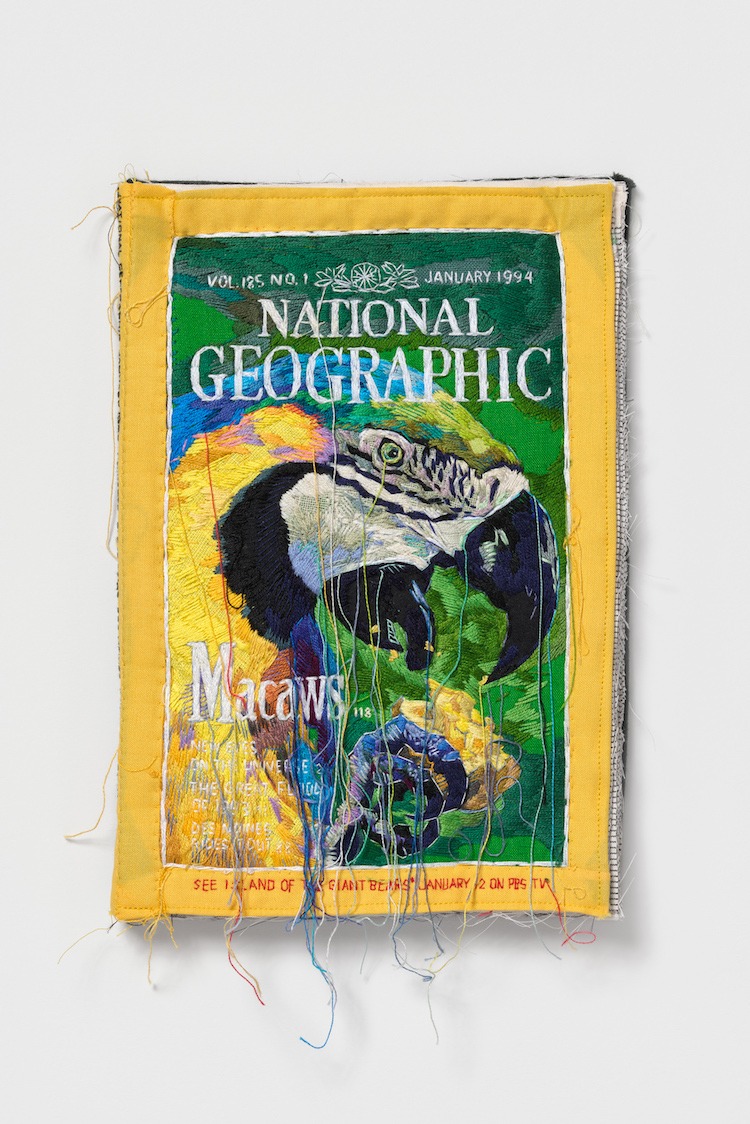
Abstract forms
What currently inspires you?
Ever since I saw Ken Price’s 2013 show at the Metropolitan Museum, he has been my very favourite. The most inspiring show I saw this year was also at the Met, Rei Kawakubo’s Art of the In-Between at the Costume Institute.
How has your work developed since you began and how do you see it evolving in the future?
My work has taken a bit of a turn in recent years since I started making these more abstract forms, rather than the more literal or representation pieces I’d made for about ten years.
I switched things up because I felt like I’d hit a little bit of a dead end in the representational work, although I still loved working in the studio and still felt interested in the ideas behind this work, I felt like I was in ‘production’ mode in the studio. Rather than working with the playful and lively approach that had led me to start using textile and stitching in the first place, I’d become so mechanical in my process!
It became a little boring and I felt like the works I was making had lost their spirit, they no longer seemed to make the room sing, to me, and I wanted to breathe some life into what I was making.
I’ve never really taken a class in sculpture or studied sculpture so when I started I was just making objects. Now I think a lot about what it takes to make a good sculpture and how these object function in space, and that’s been a really big development.
I’m not sure how my work will evolve in the future, maybe in scale or into a new material. I’m interested in working bigger, at a human scale, and also into making furniture objects that people can sit on and touch.
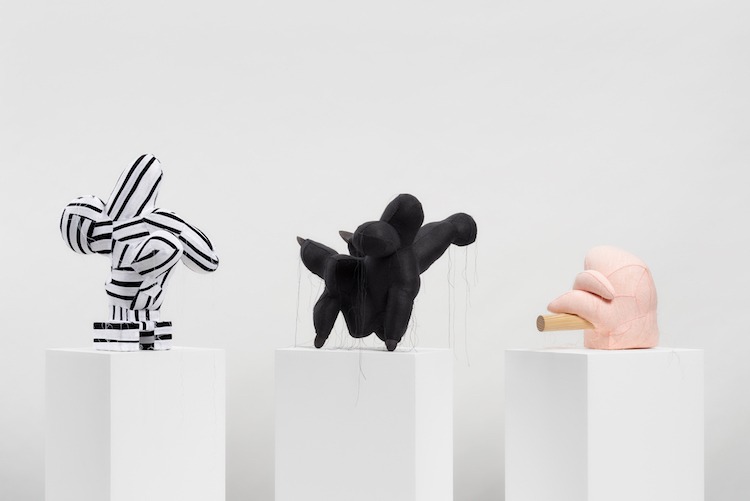
What advice would you give to an aspiring textile artist?
Textiles are great at bringing people together, so reach out to others working in the medium and make work together!
Try to find some good artist friends who you trust to share your work with, their positive feedback and support will be really fulfilling and their critical or negative comments, which you should always want to hear, will help you push the work to get better and better.
Work as much as you can, but don’t forget to rest and stretch your hands, you will need them to put on your clothes and open jars for your whole entire lifetime.
What piece of equipment or tool could you not live without?
My four best tools were all gifts from dear people in my life and, though I could make my current work with just a needle as a tool, I find these three tools very helpful and also of great sentimental value.
First is my [easyazon_link identifier=”B001TKYGI2″ locale=”UK” tag=”wwwtextileart-21″]Singer Featherweight sewing machine. I think a lot of sewing aficionados would agree that it’s the best sewing machine ever made.
Second is my [easyazon_link identifier=”B000BS03XA” locale=”UK” tag=”wwwtextileart-21″]Leatherman . I like to make very simple armatures and so I like a simple tool, this one has a screwdriver, a saw, pliers…pretty much everything I really need.
Third is a [easyazon_link identifier=”B00GN5KLMS” locale=”UK” tag=”wwwtextileart-21″]Japanese hand saw that my cousin gave me. I use a lot of 1.5” wooden dowels and furring strips and 2×2’s for my simple armatures and this is the perfect tool for cutting them.
Fourth is a tomato pin cushion, gifted to me with googly eyes glued on. Given to me by one of my funniest friends, it reminds me to always have a sense of humour in my work.
I read that the origin of the traditional tomato pin cushion is that apparently in olden days, keeping a tomato on the mantel in a home served to ward off evil spirits and ensure good luck and good health and, that when tomatoes were out of season, people would make tomatoes out of fabric stuffed with sawdust and eventually stitchers would use these as pin cushions… nobody wants evil spirits in the studio, so this is very handy to have around.
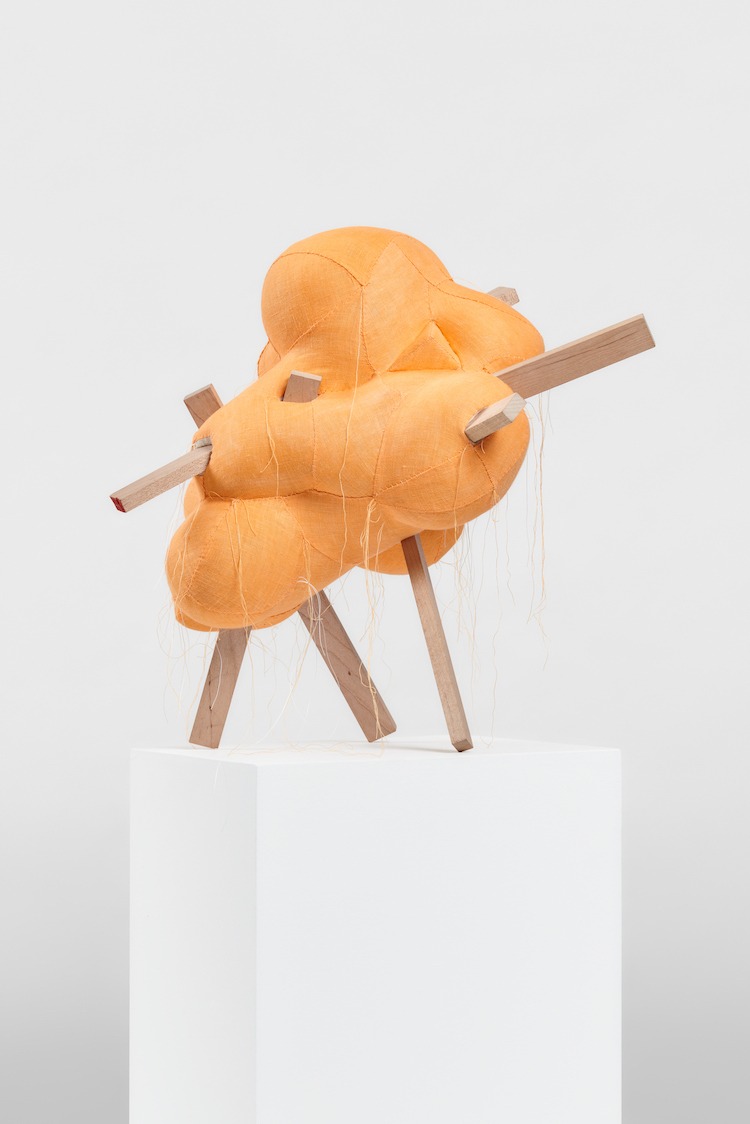
Do you give talks or run workshops or classes? If so where can readers find information about these?
This summer, August 2018, I will be teaching a class at Arrowmont School of Arts and Crafts in Gatlinburg, Tennessee. It’s a wonderful place and they have lots of great textile classes, I highly recommend checking out their summer program!
Where can readers see your work this year?
At the end of 2018, I’ll be an artist-in-residence at the Kohler Arts/Industry Program, which I’m very excited about! I’ll be in a group show in Madison, Wisconsin and Monterey, California and probably some others!
My next solo show with the gallery I’m represented by, Jack Fischer Gallery, will be in 2019.
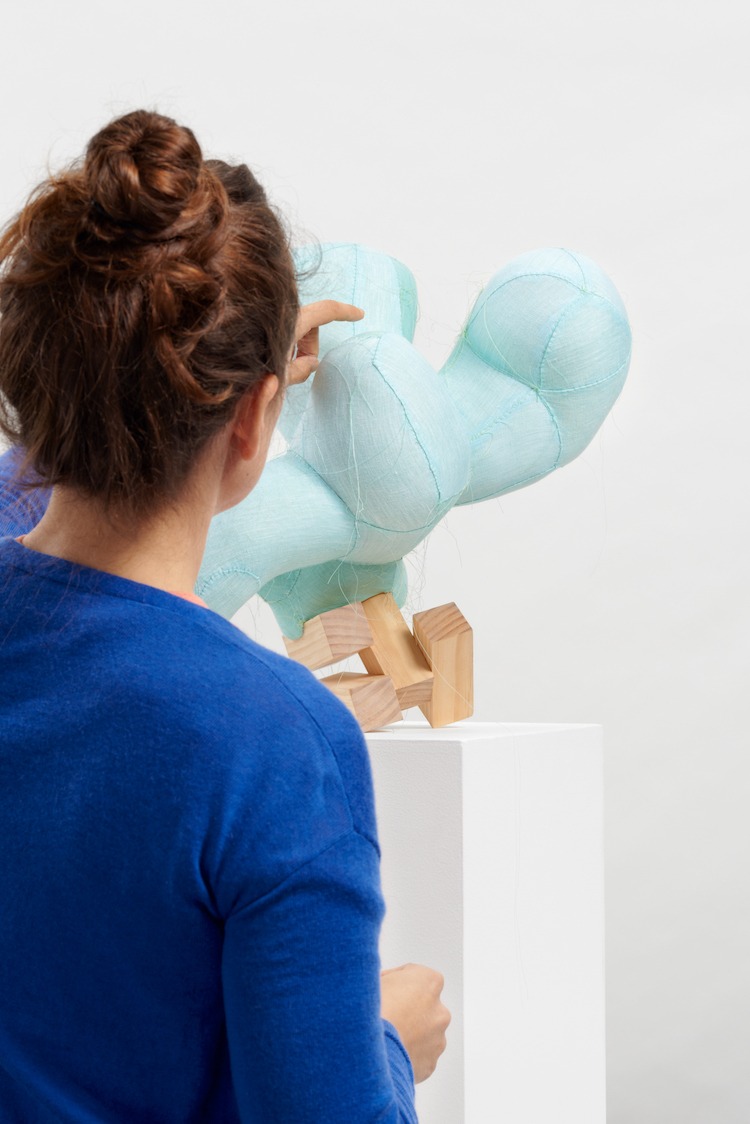
For more information visit: www.laurendicioccio.com
Let us know what your favourite aspect of the artist’s work is by leaving a comment below.
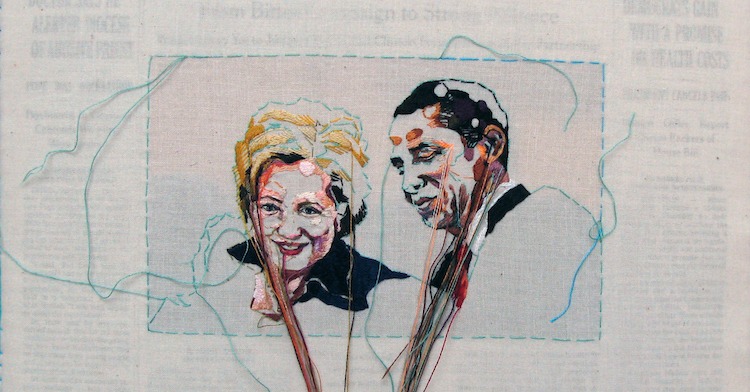
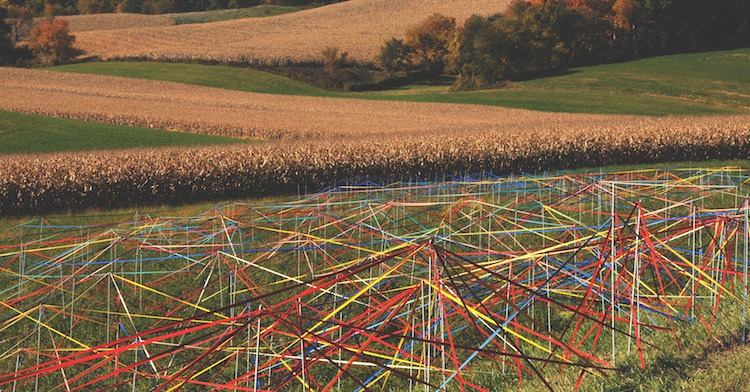
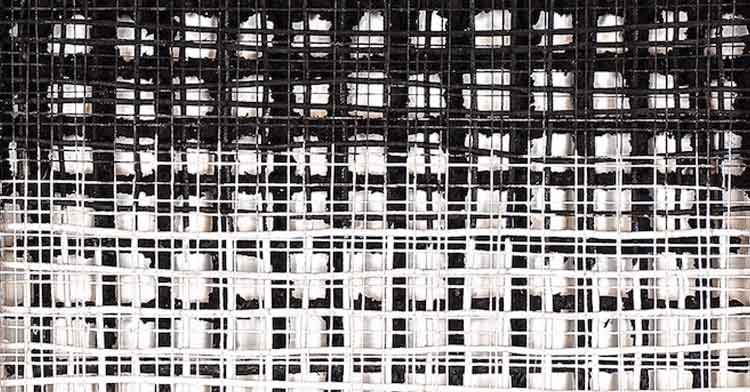
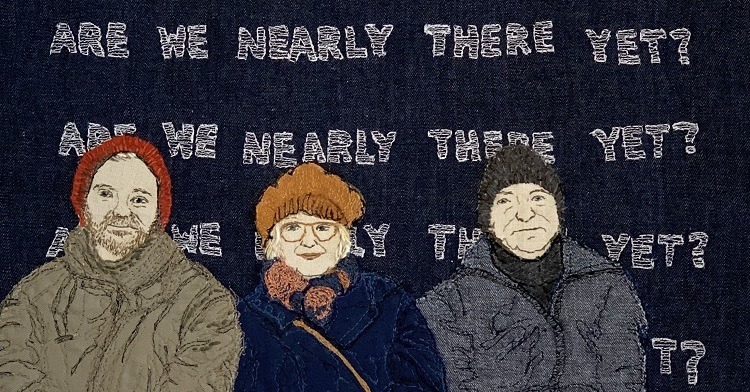
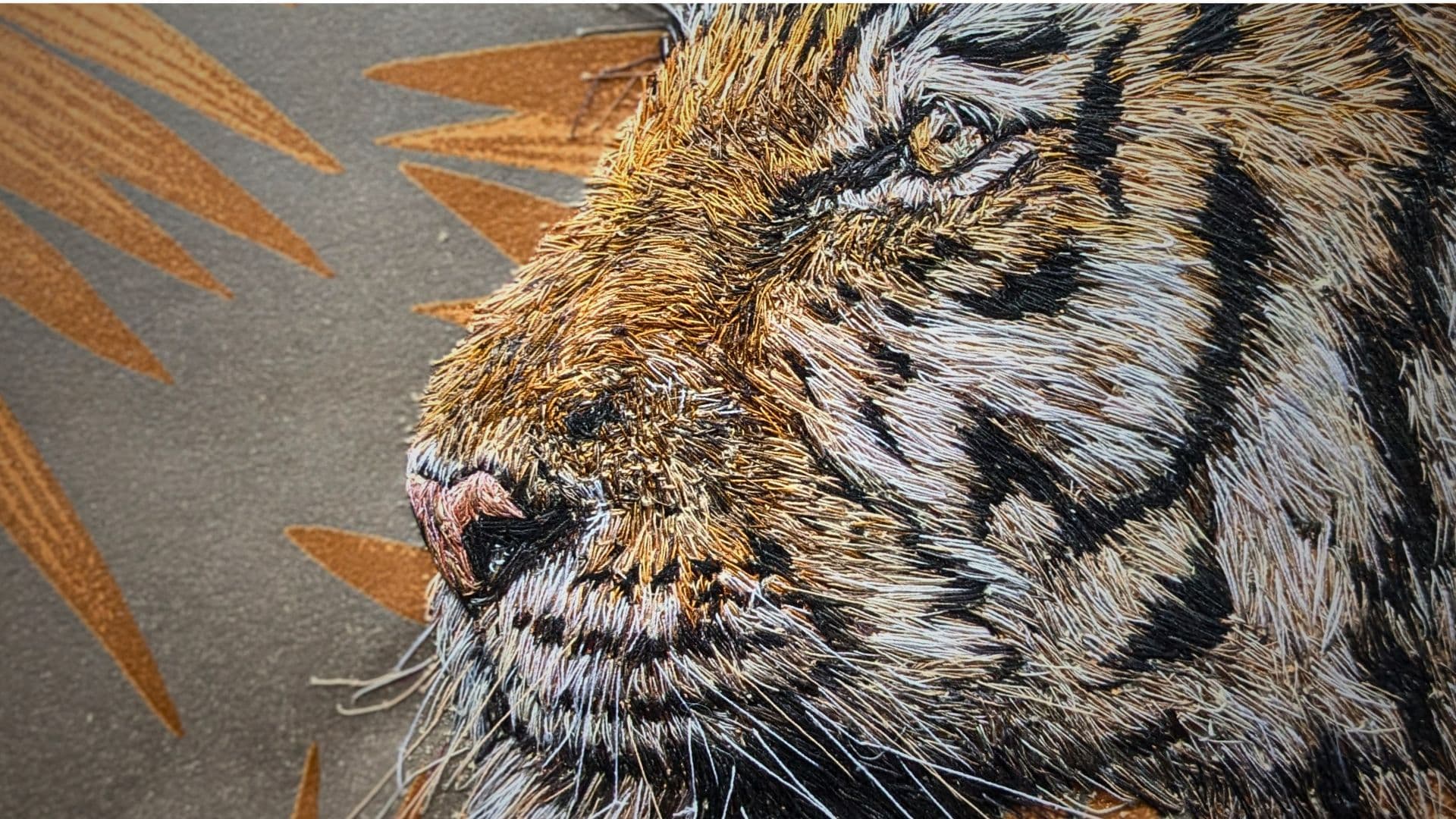
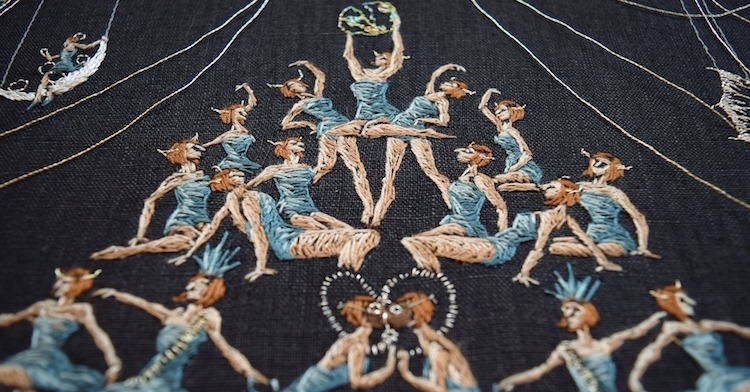
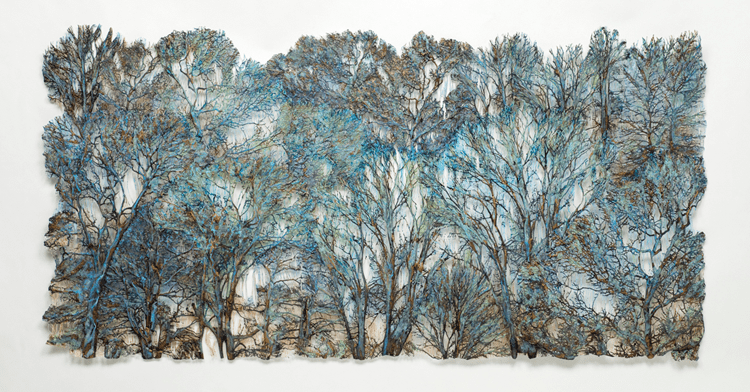
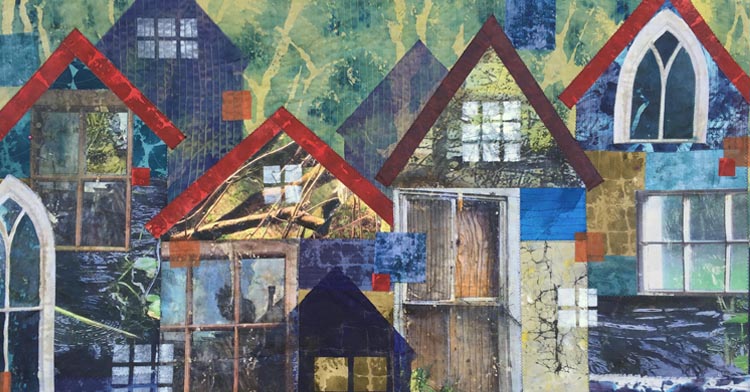
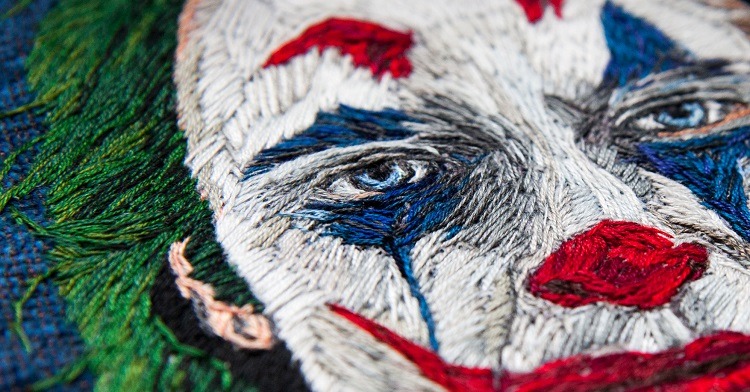
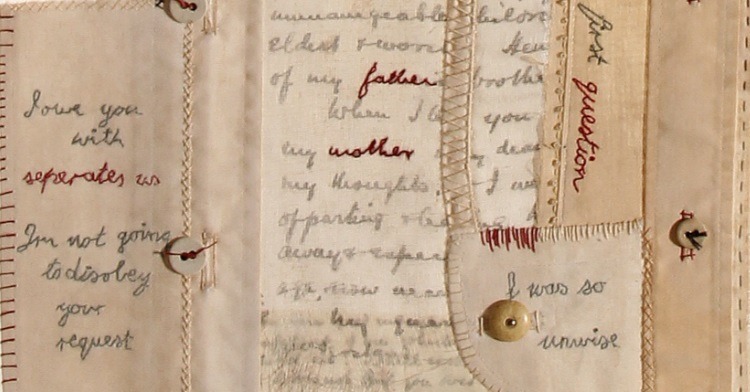
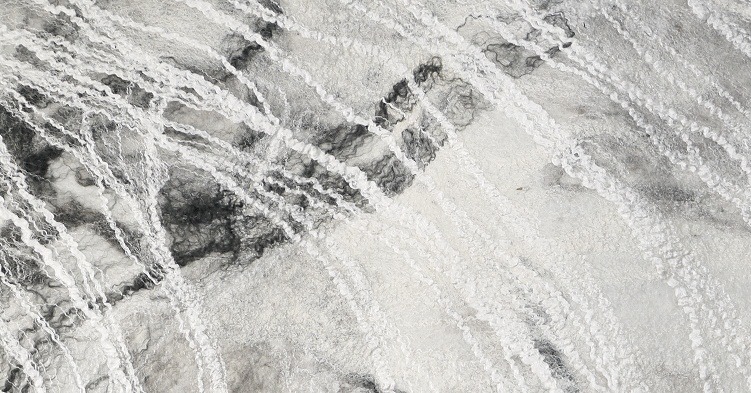
Comments